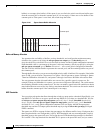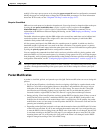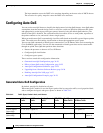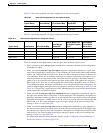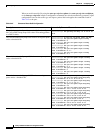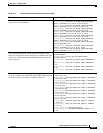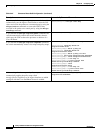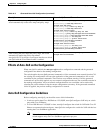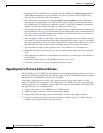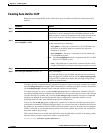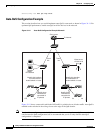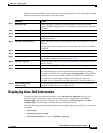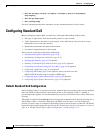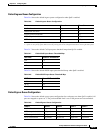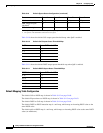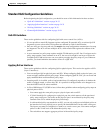
34-26
Catalyst 3560 Switch Software Configuration Guide
OL-8553-06
Chapter 34 Configuring QoS
Configuring Auto-QoS
• Beginning with Cisco IOS Release 12.2(40)SE, Auto-Qos VoIP uses the priority-queue interface
configuration command for an egress interface. You can also configure a policy-map and trust
device on the same interface for Cisco IP phones.
• If the switch port was configure by using the auto qos voip cisco-phone interface configuration
command in Cisco IOS Release 12.2(37)SE or earlier, the auto-QoS generated commands new to
Cisco IOS Release 12.2(40)SE are not applied to the port. To have these commands automatically
applied, you must remove and then reapply the configuration to the port.
• To take advantage of the auto-QoS defaults, you should enable auto-QoS before you configure other
QoS commands. If necessary, you can fine-tune the QoS configuration, but we recommend that you
do so only after the auto-QoS configuration is completed. For more information, see the
Effects of
Auto-QoS on the Configuration, page 34-25.
• After auto-QoS is enabled, do not modify a policy map or aggregate policer that includes AutoQoS
in its name. If you need to modify the policy map or aggregate policer, make a copy of it, and change
the copied policy map or policer. To use this new policy map instead of the generated one, remove
the generated policy map from the interface, and apply the new policy map to the interface.
• You can enable auto-QoS on static, dynamic-access, voice VLAN access, and trunk ports.
• By default, the CDP is enabled on all ports. For auto-QoS to function properly, do not disable the
CDP.
• When enabling auto-QoS with a Cisco IP Phone on a routed port, you must assign a static IP address
to the IP phone.
• This release supports only Cisco IP SoftPhone Version 1.3(3) or later.
• Connected devices must use Cisco Call Manager Version 4 or later.
Upgrading from a Previous Software Release
In Cisco IOS Release 12.2(20)SE, the implementation for auto-QoS changed from the previous release.
The generated auto-QoS configuration was changed, support for the Cisco SoftPhone feature was added,
and support for Cisco IP Phones on routed ports was added.
If auto-QoS is configured on the switch, your switch is running a release earlier than Cisco IOS
Release
12.2(20)SE, and you upgrade to Cisco IOS Release 12.2(20)SE or later, the configuration file
will not contain the new configuration, and auto-QoS will not operate. Follow these steps to update the
auto-QoS settings in your configuration file:
1. Upgrade your switch to Cisco IOS Release 12.2(20)SE or later.
2. Disable auto-QoS on all ports on which auto-QoS was enabled.
3. Return all the global auto-QoS settings to their default values by using the no commands.
4. Re-enable auto-QoS on the ports on which auto-QoS was disabled in Step 2. Configure the ports
with the same auto-QoS settings as the previous ones.



